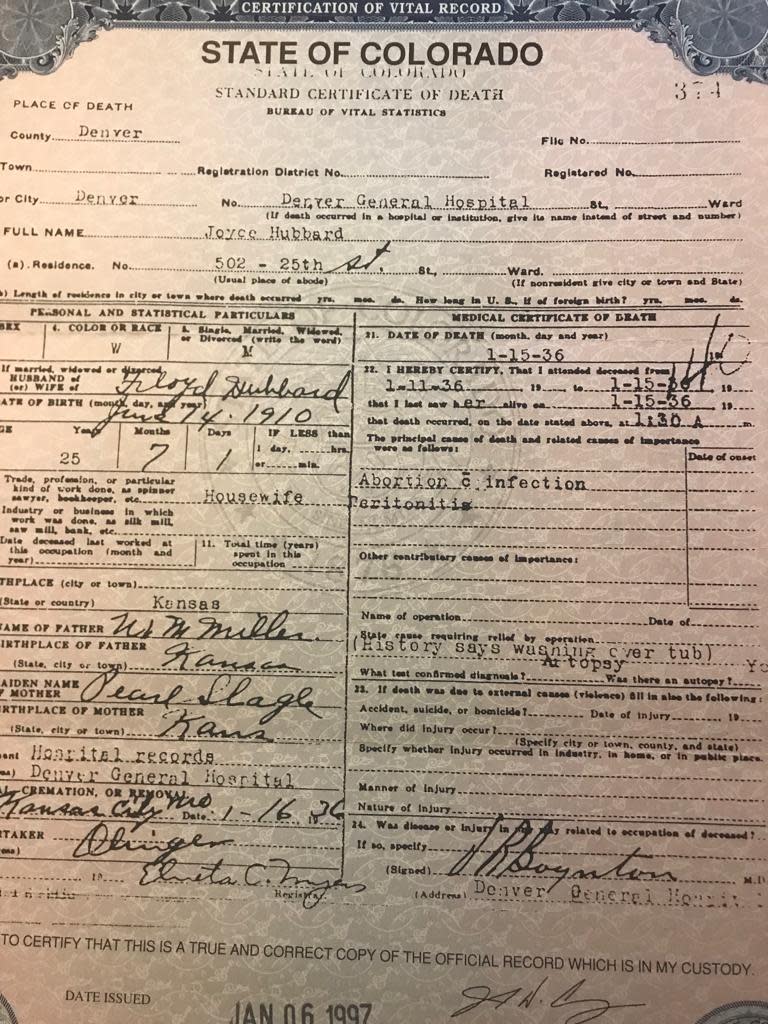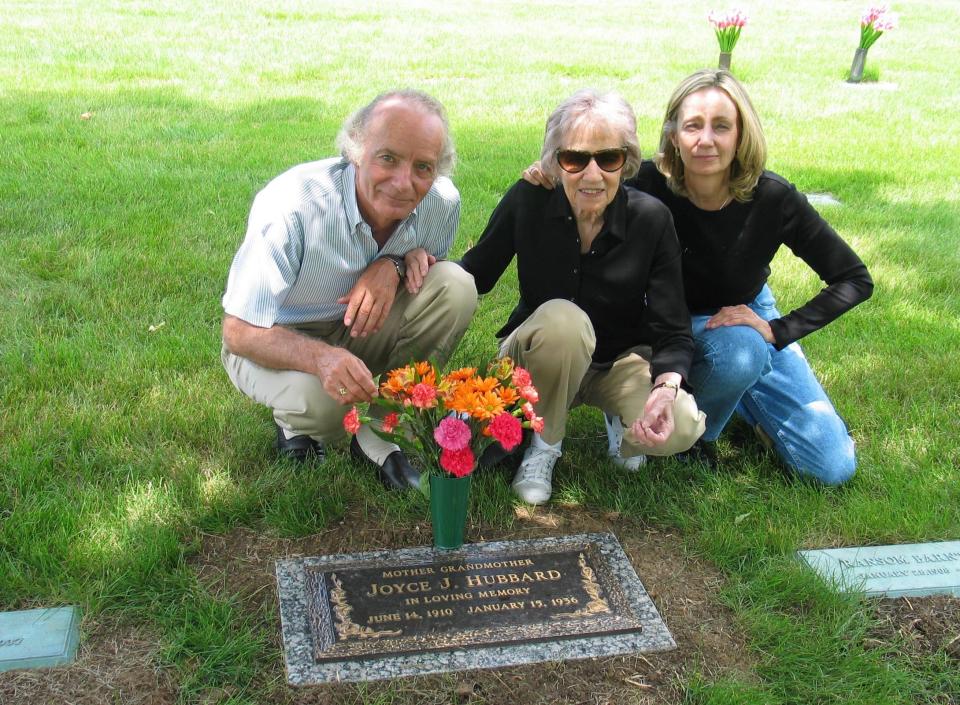My great-grandmother died from an illegal abortion. Her story could be one you know soon.
Correction & clarification: An earlier version of this column incorrectly stated the author's great-grandmother's age when she died. She was 25.
My grandmother was turning over in her grave as the U.S. Supreme Court heard oral arguments in the Mississippi case Dobbs v. Jackson Women's Health Organization, which seeks to outlaw abortions after 15 weeks, before fetal viability, and contrary to five decades of Supreme Court precedent. With this case, the justices will decide whether all pre-viability prohibitions on elective abortions are unconstitutional.
By even agreeing to take this case, certain members of the Supreme Court are considering potentially turning back the clock on women's rights and reinstating the dangers that killed my great-grandmother in the early 20th century, when she died from infection after a botched, illegal backroom abortion.
Legal precedent
According to the Supreme Court's decision in Roe v. Wade, which was reaffirmed in the 1992 case Planned Parenthood v. Casey: States can't ban abortions before fetal viability, or when the fetus can survive outside of the womb. Scientists largely consider that period to be between 22 and 24 weeks of pregnancy.
That viability line drawn in 1973 was a key area of questioning Wednesday, as Mississippi Solicitor General Scott Stewart attempted to introduce "new" science that pre-viability fetuses can feel, and that the right to abortion is not in the Constitution.
What did Roe v. Wade actually say?: The landmark abortion rights ruling, explained
Justice Sonia Sotomayor noted that in the years since Roe and Casey, the Supreme Court has repeatedly affirmed that abortion bans before viability present an undue burden on women, pointing out that poor women, Black women, women of color, and women with disabilities stand to suffer the most from bans because wealthy, often white, women have historically been able to travel to places where abortions are safe and accessible.
A botched abortion killed her
That story of poverty and a botched abortion is my family's story.
My great-grandmother died from an unsafe, illegal abortion. With Roe possibly doomed at the Supreme Court, prepare to see more women and girls suffer painful deaths as they seek out illegal abortions.

It was 1936 when my great-grandmother, Joyce Hubbard, found out she was pregnant again. She was 25.
After the 1929 stock market crash, the Hubbard-Millar family from Clinton, Missouri, could barely feed their four kids and were experiencing homelessness. Joyce decided to have an abortion, which was illegal at the time.
That decision would take her life and would tragically mark the life of my grandmother, who would be sent to live with relatives as her father battled poverty, alcoholism and depression.
Women have been finding ways to end pregnancies since ancient times. Before Roe, wealthy women were able to travel to Europe to seek abortions. But in 1936, poor women in rural America were left with unappealing ways to end their pregnancy, all of which could result in death for themselves.

In a University of California Irvine's Western Journal of Emergency Medicine article, "The Back Alley Revisited: Sepsis after Attempted Self-Induced Abortion," the authors describe some of the more well-known methods that women used (and continue to use) to induce abortion. There were oral and injectable medications like phosphorus, mercury, lead, kerosene, turpentine and detergents.
There also were coat hangers, knitting needles, sticks and crochet hooks, which were often swarming with bacteria. And then there was self-inflicted abdominal trauma, such as a belly flop onto the floor or ramming one's stomach into the edge of the bathtub.
In the case of my great-grandmother, we were never sure about the details of her death, except the medical diagnosis listed on her death certificate, "Abortion c (sic) infection. Peritonitis."
It's hard to know whether Joyce told the truth about what she had done to end the pregnancy, or how long she waited until she sought treatment. She may have developed the peritonitis from a perforation in her uterus, or from unsterilized instruments that scratched her insides, poisoning her blood with bacteria.
She likely lay in her hospital bed retching for days, raked by fever, cramping, sweats, vaginal bleeding, vomiting and intense pelvic pain as her body attempted, and failed, to fight off deadly bacteria.
Such will be the fate of millions of American women if the Supreme Court dares to backtrack on women's reproductive rights - because women always have, and always will, seek ways to end unwanted pregnancy.

Tragedies to come
According to Planned Parenthood, about 25 million women and girls of reproductive age live in states where they are expected to lose abortion access if the United States lets states decide whether to legalize or restrict abortion (as before Roe v. Wade). Also according to the organization, "Overturning Roe v. Wade could put safe, legal abortion out of reach for one-third of people ages 15 to 49 who may need it."
In a 2004 report, the World Health Organization estimated that 68,000 women die due to the complications of unsafe abortions, with sepsis as a major cause. In the United States, we have largely avoided this issue thanks to the availability of access to a legal, safe abortion, guaranteed by the Supreme Court's decisions.

I am glad that my grandmother is not alive today to see that 85 years after her mother's death, and after nearly 50 years of legal precedent – women are still fighting for the right to make safe choices about their reproductive health.
I will not stand by quietly as women's bodies are again treated as collateral damage in a conservative war on abortion.
My great-grandmother's death was not in vain.
Carli Pierson is an attorney and an opinion writer at USA TODAY. Follow her on Twitter: @CarliPierson
You can read diverse opinions from our Board of Contributors and other writers on the Opinion front page, on Twitter @usatodayopinion and in our daily Opinion newsletter. To respond to a column, submit a comment to letters@usatoday.com.
This article originally appeared on USA TODAY: Abortion rights: Supreme Court decision may put women's lives at risk

 Yahoo Movies
Yahoo Movies 
